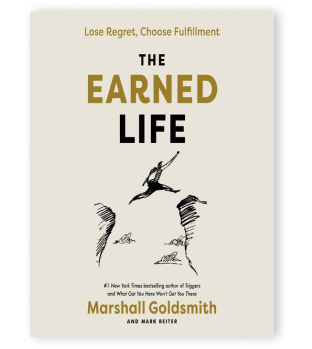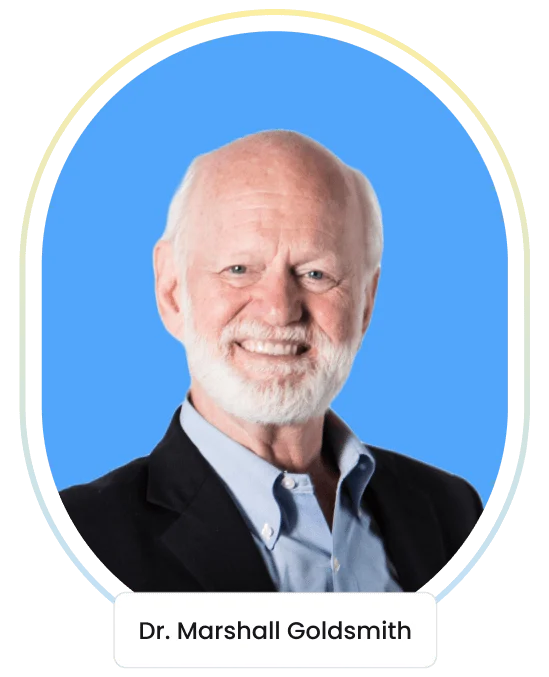The number one reason Marshall Goldsmith’s clients are so successful is that they are always looking to improve.
Widely recognized as one of the top business thinkers in the world, Dr. Marshall Goldsmith is an expert on leadership and coaching for behavioral change. We spoke with him to learn more about his approach to coaching leaders and for some practical tips for success.
Dr. Marshall Goldsmith is the only two-time winner of the Thinkers50 Leadership Award. He has been ranked as America’s number-one executive coach by Inc. magazine and was the inaugural winner of the Global Gurus Corps d’Elite Lifetime Achievement Award. He has written or edited 48 books, which have sold over three million copies, including three New York Times and Wall Street Journal bestsellers. In his most recent book, The Earned Life, Goldsmith emphasizes the importance of living our own lives rather than someone else’s version.
Your clients are successful people. Why do they feel the need to have a coach?
I’ll answer that with a question: Why do the top ten tennis players in the world need a coach? The answer is the same: to get better. The number one reason why people like my clients are such amazingly successful is that they are always looking to improve. To me, that’s nothing to be ashamed of. That’s something to be proud of.
What are some of the classic problems of successful people?
That’s an easy one to answer. The biggest issue is that they want to win too much. If it’s important, they want to win. If it’s meaningful, they want to win. If it’s critical, they want to win. But if it’s trivial, they still want to win, even if it’s not worth it. Winners love winning, and all my clients are winners.
A second problem that successful people are guilty of is adding too much value. Let me explain what I mean with an example. An employee goes to the CEO with an idea. The CEO thinks it’s a great idea, but rather than simply going with it, they suggest a slight tweak. The problem is that while the quality of the idea may improve by, say, 5% because of the change, the employee’s enthusiasm for it may reduce by 50% because it’s now the boss’s idea, and they are now just following his orders.
I’ve worked through this with: “I’ve learned that my suggestions become orders. So now, before suggesting, I ask myself, ‘Is it worth it?’. Sometimes it is. But perhaps 50% of the time, it isn’t. It’s a valuable lesson.” said, Jean-Pierre Garnier, the former CEO of GlaxoSmithKline.
How does your coaching process work?
I’ve developed something called stakeholder-centered coaching. This involves me establishing who my clients’ key stakeholders are. It might be board members, it could be peers, or it could be their management. We then interviewed the key stakeholders to get their opinions on what my clients are doing well and what could be improved. We find out what situations bring out the best in the client and what brings out the worst. It helps us build a comprehensive profile, which we can use to pick out the most important behaviors to work on. We then implement change and follow through to measure growth in leadership effectiveness.
Please share a practical tool that our readers can immediately put to work.
Let me share something that takes almost no time at all. It’s called the daily question process. I want readers to create a spreadsheet with a series of six questions that they should answer in relation to what’s most important in their life. It could be friends, family, health, colleagues, work, or anything else. Here are some example questions:
1. Did I do my best to set clear goals?
2. Did I make progress toward achieving the goals that I set?
3. Did I do my best to create meaning in life?
4. Did I do my best to be happy?
5. Did I do my best to build positive relationships?
6. Did I do my best to be fully engaged?
Every question must be answered with a yes or no, recorded as a one or a zero. Every day, you fill it out, and at the end of the week, you create a report card. It’s not easy. No one likes looking in the mirror. I do this myself, and I amaze myself with my ability to screw something up daily. But it’s important to face the reality of your existence. Do this for a couple of weeks, and you’ll start to see real results.
What are some of the key learning points from The Earned Life?
I talk a lot about achievements in the book. The people reading this, and most of the people I coach, get stuck in achievement. They become addicted to it. And what happens when we are addicted to achievement? We forget why we’re doing what we’re doing in the first place, and we forget to enjoy the process of life.
It’s so important never to become attached to results. That’s because, one, you don’t control the results all the time, and two, what happens after you achieve the results?
One of my favorite chapters in my book is ‘Your life is about the marshmallow test.’ It explains the famous Stanford experiment, the marshmallow test, where a professor offers a child a single marshmallow now, or several if they wait. The idea is that delayed gratification is good and that those children that chose to wait tended to be more successful.
But I have a problem with this research. Delayed gratification is all well and good, but there’s a line. You don’t want to be an old man sitting in a room waiting to die and surrounded by thousands of marshmallows. Sometimes, you need to eat the marshmallow. You need to enjoy life.

The Earned Life
Dr. Marshall’s new book, The Earned Life, is now officially the fourth New York Times bestseller! It is also an Amazon Editor’s Choice Best Book of 2022. Order a copy, if you have not read it yet.
Get it here








